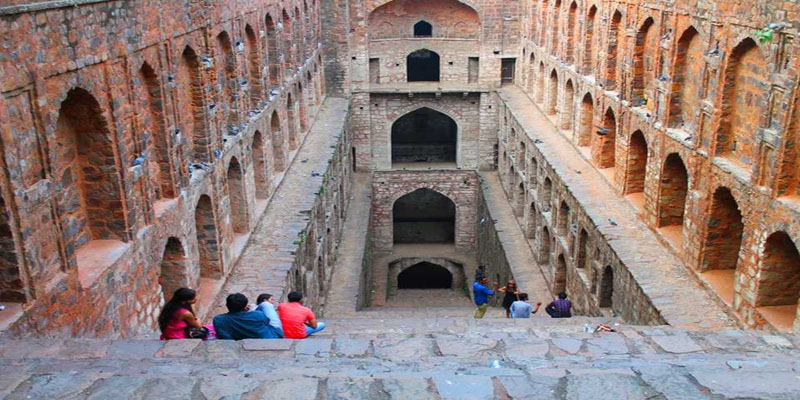Ancient Baoris (Stepwells) in India (Travel & Tickets - Vacation & Rentals)

CANetAds > Travel & Tickets > Vacation & Rentals
Item ID 4163966 in Category: Travel & Tickets - Vacation & Rentals
Ancient Baoris (Stepwells) in India | |
In the arid folds of India’s semi-deserted plains and parched hinterlands lie awe-inspiring subterranean marvels known as baoris or stepwells—timeless testaments to ancient India's ingenuity, aesthetics, and reverence for water. These enchanting structures, delicately hewn from stone, are not merely utilitarian reservoirs, but poetic confluences of architecture, mythology and ritual. Originating as early as 3rd century CE and flourishing through the medieval era, baoris served as sanctuaries for both the weary traveller and the devout pilgrim, offering cool reprieve, spiritual solace, and oftentimes, social gathering spaces. Each baori bears a distinct signature—be it in geometry, ornamentation, or regional craftsmanship—reflecting the dynasties and cultures under whose patronage they rose. Spiralling stairways descend into the earth like sacred labyrinths, flanked by pillared pavilions and adorned with intricate carvings of celestial beings, floral arabesques, and mythic epics. They whisper tales of queens who commissioned them, saints who meditated beside them, and villagers whose lives ebbed and flowed around their waters. This article journeys through ten of India’s most enthralling baoris—from Delhi’s enigmatic Agrasen ki Baori to Gujarat’s resplendent Rani ki Vav—each a chronicle in stone, echoing centuries of water wisdom and architectural finesse. Agrasen ki Baori: Tucked amid the urban sprawl of Connaught Place lies Agrasen ki Baori—an arresting anomaly in Delhi’s metropolitan heart. Believed to have been rebuilt during the 14th century by the Agrawal community, its origins are steeped in antiquity and legend, attributed to the fabled King Agrasen. This narrow, rectangular stepwell measures 60 metres in length and 15 metres in width, descending into the earth through a series of 103 stone steps. Its three arched levels present a haunting symmetry, casting long shadows that dance with mystery. The stepwell no longer holds water, yet its silence resonates deeply, conjuring visions of ascetics in meditation or royal processions pausing for sacred ablutions. Now a protected monument under the Archaeological Survey of India, Agrasen ki Baori endures as a portal into Delhi’s pre-Islamic past—a subterranean sanctuary enveloped in stone and myth. Chand Baori: Arguably the most mesmerising of India’s stepwells, Chand Baori in Abhaneri is an architectural feat that defies both logic and time. Built in the 9th century by King Chanda of the Nikumbh dynasty, this vast stepwell plunges nearly 20 metres deep and consists of over 3,500 perfectly symmetrical steps arranged in a hypnotic geometric pattern. The descent into its 13 levels is as visual as it is spiritual—a descent into both earth and serenity. Located opposite the Harshat Mata Temple, the stepwell is thought to have religious significance and served as a communal gathering space, especially during scorching summers. Its architectural precision, combined with intricate jharokhas (balconies) and pavilions on the western wall, marks it as a marvel of medieval engineering. Chand Baori is no mere water tank—it is a sacred sculpture, an ode to symmetry, and a jewel in Rajasthan’s arid crown.  | |
| Related Link: Click here to visit item owner's website (0 hit) | |
| Target Prov.: All Provinces Target City : All Cities Last Update : Jul 25, 2025 12:16 AM Number of Views: 73 | Item Owner : Optima Travels Contact Email: Contact Phone: +00-91-9810222172 |
| Friendly reminder: Click here to read some tips. | |
CANetAds > Travel & Tickets > Vacation & Rentals
© 2025 CANetAds.com
USNetAds.com | GetJob.us | UKAdsList.com | AUNetAds.com | INNetAds.com | CNNetAds.com | Hot-Web-Ads.com | USAOnlineClassifieds.com
2025-10-14 (0.564 sec)